#behind the bookshelf
Note
What got you into history?
I know I'm going to regret being this honest but:
It's probably because my first childhood crush was on Rami Malek as Ahkmenrah in 'Night at the Museum' (2006)

LET ME EXPLAIN:
1. I WAS EIGHT.
2. I grew up in NYC and so it was super cool to "see" the museum I went to all the time on school trips on the big screen.
3. Interestingly enough: before this I was actually TERRIFIED of mummies-I would literally bolt out any room if I saw any type of sarcophagus or body of any type.
4. While eight year old me did find Rami quite beautiful what I found even more fascinating was his costume and the set design of his exhibit!
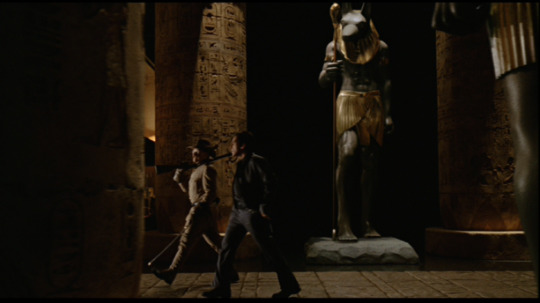
5. I remember shortly after seeing the film going to the Metropolitan Museum of Art also in NYC and seeing the Temple of Dendur a Hellenistic temple located there!

Going inside the temple for the first time I felt like I had traveled back in time and was instantly in love and needed to know everything about Egypt! This turned me on to other histories such as Greece, Rome, Japan
And here I am over two decades later I'm going to school for archeology and history!
Thank you for your question!!! I love answering all of your questions!
#ancient history#archaeology#ahkmenrah#night at the museum#rami malek#ancient egypt#temple of dendur#new york city#history#museum of natural history#the metropolitan museum of art#what inspired me#follower questions#ask me anything#behind the bookshelf
25 notes
·
View notes
Text

A quick CLOSER LOOK daily photo exercise - September 17, 2023
SEE MORE POSTS LIKE THIS
0 notes
Text
Last night I got woken up by some mysterious erratic thumping outside on the building. It instantly shot me into the nighttime Fear. I tried to calm myself down but couldn’t sleep. I kept imagining I was about to hear the sliding glass door shatter or hear a malevolent creak on the stairs.
I eventually slunk my way into my wife’s room to whimper about it. They grabbed a wooden sword and patrolled the perimeter, returning to report all was okay.
Today we’re both super tired but I’m grateful I have a partner who doesn’t get grumpy about my irrational stuff.
#ramblies#my mom has a lot to answer for with my paranoia#I actively try to fight and rationalize the insecurities she planted in my brain but at night I’m just certain I’m about to be murdered#specifically by a home invader#I long to have a bedroom behind a bookshelf because I know 1000% that I could just tell my sleepy brain that no intruder would think#to look behind a bookshelf for a bedroom
346 notes
·
View notes
Text

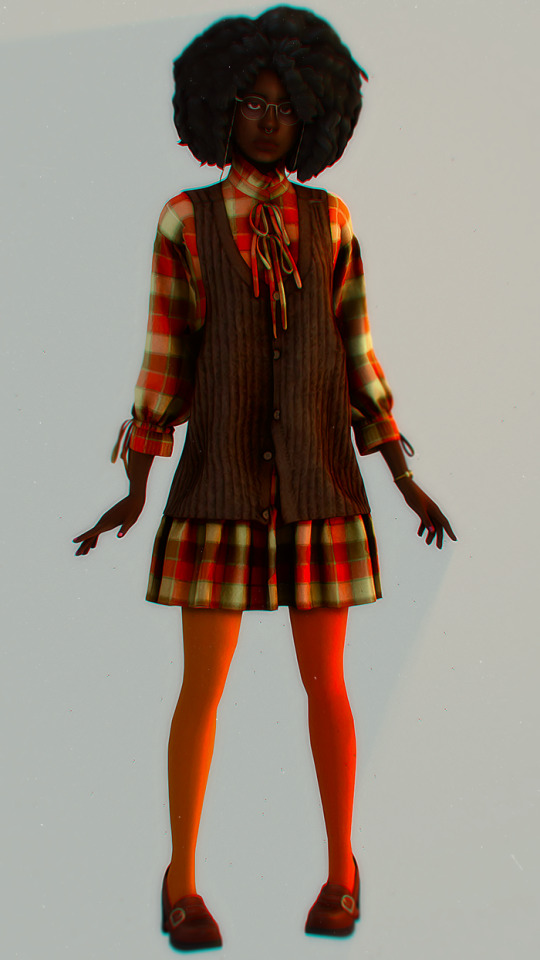
michaela addison
#would you kiss her behind a bookshelf and write secret messages in the footnotes ?…#i need to do a variety of posts i wanna explore backgrounds#i literally have so many in an alt cas background folder 🫡 they literally sit there and rot i am a horrible mother#holding a gun to my head and forcing myself to do that next#*michaela addison#mine#cas
219 notes
·
View notes
Text
Queen of the Fairies
All children love fairies. Who among us does not have memories of springtime afternoons with Nurse in the gardens, watching those tiny, human-like forms flitting through the world on their delicate wings, who seem to be clad in the very blossoms among which they live?
Yet most of us, as we age, forget about the fairies. We rush past gardens and flower boxes with barely a glance for the blooms themselves, much less for the delicate creatures that hide so carefully among them. If we think about them at all, they are part of the hazy, distant memories of long-ago childhood, not a vital part of the landscape that supports every facet of our daily lives.
But there is one woman who did not forget. Who never did forget, in her eight-and-four-score years of life, despite a scientific world that laughed her to scorn. As I, with all of England, mourn the passing of this inestimable woman--beloved author, illustrator, and (at last) honored naturalist, I can think of no better way to honor Constance Sommers than to recall my childhood meeting with her in the summer of my seventh year.
I had always loved watching the fairies in the window boxes outside my family’s London home. In 1892, I visited my grandparents in the countryside, and a new world opened up to me, filled with more flowers—and more types of fairies—than I could have imagined. I spent every waking moment in my grandmother’s gardens. I watched fairies hatch from the hearts of blooming tulips, scatter thousands of dandelion seeds, and endlessly paint the delicate shades of apple blossoms.
My favorite place, however, was my grandmother’s rose garden. There I found fairies whose forms matched every species of rose to a shade—save one. The crowning jewel of my grandmother’s garden was a rose she had bred herself; its white blossoms, as large as my hand, were streaked with red, and its scent was like a thousand fresh-plucked fruits. I knew that such a flower could only be tended by the grandest and most beautiful of fairies, and I watched, breathless, week after week for this hypothetical fairy to show her face.
At last, on a morning when my quest left me restless with anxiety, I tiptoed out of my room and slipped out to the rose garden in the gray light of dawn. As soon as I reached the prized rose bush, I saw fairy even more beautiful than I had imagined. Every bit of her form, from her face to her tiny fingers and toes, was pure white, with only the faintest green specks in her gray eyes. One of grandmother's red-and-white blossoms seemed to splay from her waist like a dancer's skirt, and her wings were so transparent that in that dim light, she appeared to have none, and instead seemed to float upon the delicate breath of the dawn.
At first, I stood awestruck—this was truly a queen among fairies. Then I recalled—I couldn’t let her slip out of my grasp. In a twinkling, I caught her in a glass jar, with one of my grandmother's roses tucked safely inside to serve as shelter and food.
How I rejoiced in that treasure! I brought the fairy to my room and marveled at her graceful fluttering until breakfast time, when I slipped away to the kitchen to eat with Nurse. By the time I returned, the beautiful little fairy was splayed, lifeless, across the base of the jar.
I wept myself breathless, completely inconsolable. Nurse offered comfort and threatened punishment, but she could not quiet me. At last, my sobs drew Grandmother, who took one look at that lovely little fairy and said, "I suppose there's nothing to do but give it to Constance Sommers."
I knew that name—every child in England did. Constance Sommers had written and illustrated the marvelous tales of the flower fairies that had a place on every nursery shelf—and all this time, she had been one of my grandparents’ neighbors! Surely she, if anyone, could save this little fairy! After much begging and pleading, I was allowed, reluctantly, to accompany Grandmother as she brought the fairy to Miss Sommers.
The carriage brought us to a tidy brown brick cottage atop a hill, surrounded by the most glorious gardens I had ever seen. Flowers bloomed on shrubs and trees, climbed trellises and the walls of the cottage, and blanketed the ground with every color of the rainbow. Even from the carriage I could see dozens of fairies flitting among the blossoms. I was utterly enchanted. Were it not for the dead fairy I carried in the jar, I might have lost myself in ecstasy.
The moment we alighted from the carriage, a gate leading to a back garden opened, and a woman strode toward us. She was like the branch of a tree—impossibly tall, thin and knobby. Her hair—dark, with only whispers of silver—was cut close to her head. She wore a simple white shirtwaist and black skirt, and dozens of tools—pens, keys, scissors, lens—hung from a silver-chained chatelaine at her waist. Her eyes, caged behind gold-rimmed spectacles, darted a million directions, fairy-quick, as if cataloging the landscape.
At last, her eyes lit on me—or rather, upon the jar in my hands. She rushed toward me without so much as a glance at Grandmother. “Fairy?” she asked.
I nodded and lifted the jar toward her. She took it and examined it with those sharp eyes—which quickly widened. “I’ve never seen this kind before.” Those eyes pierced me. “Where did you find it?”
She was speaking to me, not Grandmother! Never before had an adult addressed me so directly. “In Grandmother’s rose garden,” I said. “Can you save it?”
The head moved—one sharp shake. “It’s dead. Perfectly preserved. Do you have more?”
“N...no.”
“If you get some, I’ll pay triple the going rate. Could be a new species.”
She bombarded me with questions—what kind of flower the fairy resembled, the location of the garden, the soil conditions, the time of capture, the surrounding flowers. Grandmother answered the more technical ones, but since she hadn’t seen the fairy until I’d shown it to her dead in a jar, most of the questions about it fell to me. I was terribly shy, but under the circumstances, too bewildered to be afraid. As Miss Sommers jotted down my answers in a small diary, I had my first brush with a scientific approach to fairies—and I was fascinated.
As she questioned, Constance Sommers wandered through her gardens, making note of various fairies—lilies, honeysuckle, hollyhocks—but clearly intending me to follow and continue with the interview. I had never felt so important. I answered the questions to the best of my ability—and she seemed impressed.
“You’ve got a good eye,” she said. “Good memory.”
As if I could have forgotten anything about the queen of the fairies!
I trailed Miss Sommers through her back garden, losing Grandmother somewhere along the way. At last, Miss Sommers approached one of the cottage’s side doors. With a twist of one of the keys at her waist, the door opened, and I followed her inside.
At first, I thought we’d entered another garden. Every surface—every wall, ceiling, shelf and dozens of tables—seemed to be covered in framed flowers. Enchanted, I stepped closer to the nearest one, and found that it was the lilaced purple skirt of a flower fairy.
My enchantment turned to horror. Every single one of those surfaces—every frame—was filled with flower fairies, each one as lifeless as the beautiful specimen in my jar.
I ran away screaming.
I took only two steps out the door before Miss Sommer’s hand came down upon my shoulder like an iron shackle. She stood over me, as immovable as stone. “Where are you going?”
She did not sneer. She did not sympathize. She didn’t try to soothe or placate me. She simply asked. Before such unshakable practicality, I was helpless. My screams stopped.
She pulled me back into that room and plopped me onto a low wooden stool. Frozen as I was, I didn’t resist. Then she opened the door, tipped the fairy onto a table, and went to work.
Her hands were like two fairies, constantly in motion, yet always sure where they were going. I forgot about the walls and simply watched her work. With minuscule brushes, she cleaned the fairy’s lifeless form, then arranged it inside another wooden frame. She posed it with its hands outstretched, its nearly invisible wings positions halfway down so as to catch some of the light in rainbows. I recognized in this work the same hand that had painted such delicate pictures of living fairies. Though the fairy’s end was tragic, she was turning it into something beautiful.
As she worked, she lectured—I believe she forgot I was only a visiting seven-year-old, and not a potential apprentice. She explained how the preservation of specimens allowed for further study. She spoke about competing theories as to the origins of the fairies—whether they were one species that took on camouflage based upon the nearby blossoms, or multiple species that were born with each flower—whether they were somehow tied to the flower’s life cycle or whether they were an independent species laying eggs within the blossoms.
I have heard it said many times over the years that Constance Sommers did not like children. Certainly, she did not handle children with delicate patronizing care, as the adults of that generation and that class tended to do. Certainly, she had attention only for her work. But I believe it was simply that she was no respecter of age. Whether her listener was seven or seventy years of age, so long as they respected her work, she allowed them to stay.
That day, I stayed for hours as she utterly captivated my mind and imagination. My little fairy, who met such a tragic end, became a crowning jewel of her collection, vital to her later discoveries about the camouflage abilities of rose fairies. Those discoveries were not published by the scientific community for decades—her gender and field of study made it almost impossible for her to be taken seriously, until later developments in ecology made her work impossible to ignore.
But what adults could not accept, children welcomed with open minds. The fairy of the white-and-red-striped rose featured in her next picture book—as Queen of the Fairies.
Now, I am grateful that, in recognizing both the artistic and scientific achievements of this remarkable woman, the rest of England knows what I learned that day—that title truly belongs, and always will belong, to Constance Sommers.
#the bookshelf progresses#fantasy#this is not what i wanted it to be at all#but the story that was so clear in my head fizzled out halfway#and since i don't want to get days and days behind i'm just gonna post what i managed to come up with
43 notes
·
View notes
Text
It is my eternal load to bear to have the knowledge that Sidon is heavily implied to not like yona in a romantic or sexual way.
#sidlink#king sidon#tears of the kingdom#legend of zelda#totk#loz#link#sidon#zora#they changed the zora stone monuments and Sidon admits his feelings in one of them#why does no one know#insert that one scene from that sci fi movie with the guy behind the bookshelf#desperately trying to be heard#but his words falling on deaf ears
92 notes
·
View notes
Text
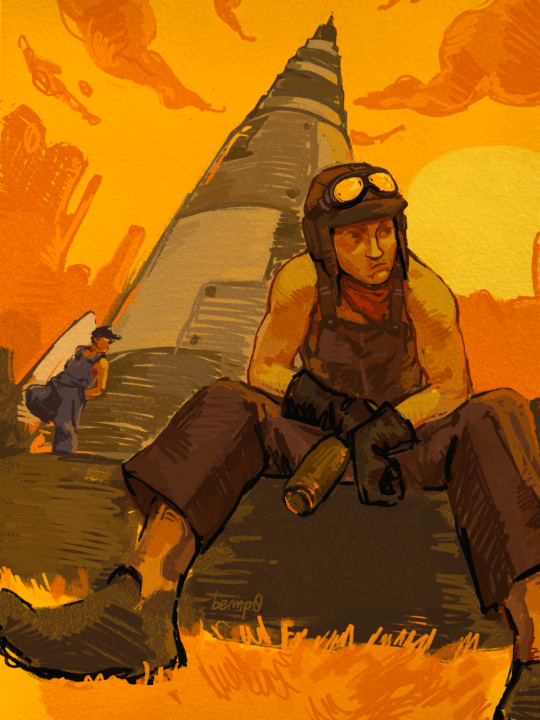
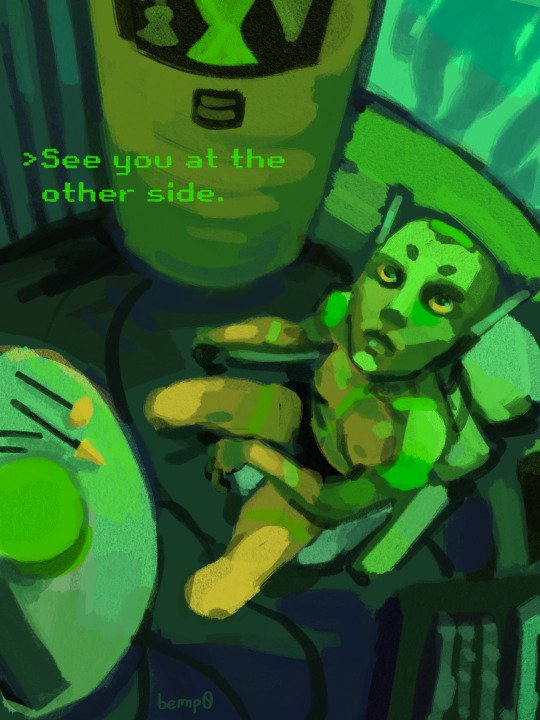





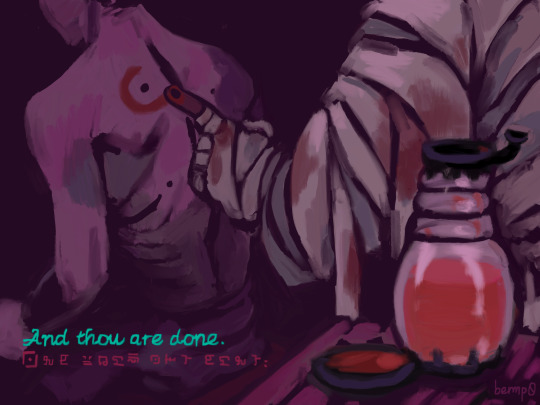
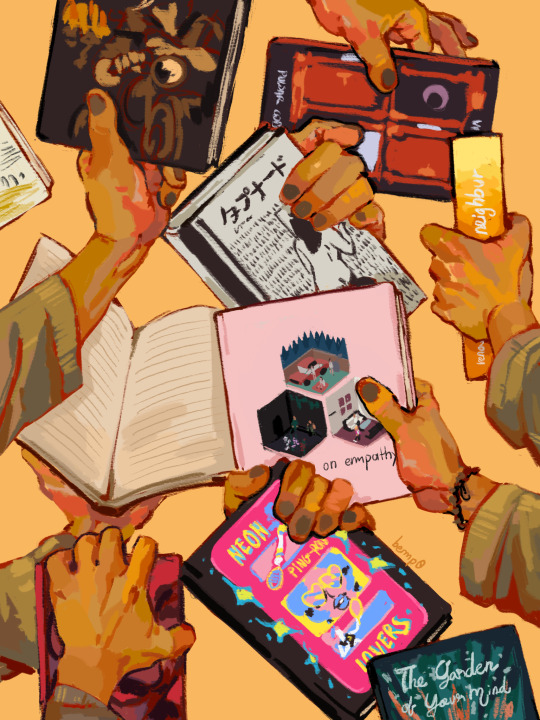
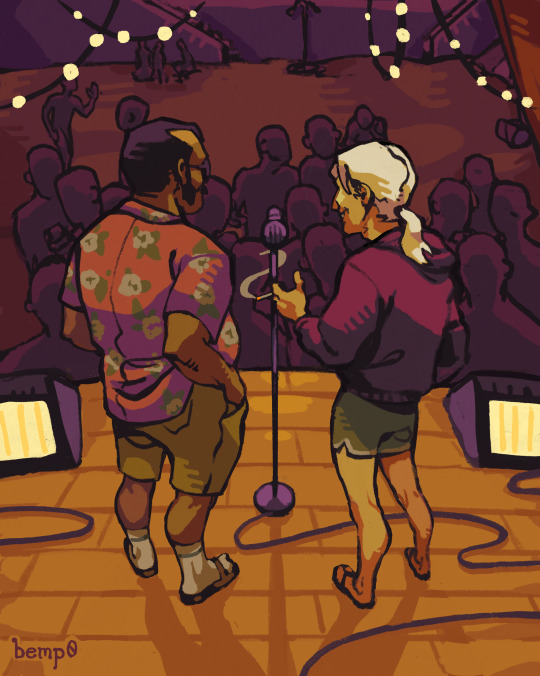
Ensayos sobre la empatía
#took me a while but finally finished them all#these games are great to make fast simple illustrations since they're all so short and creative#anyways this was fun#essays on empathy#deconstructeam#underground hangovers#zen and the art of transhumanism#supercontinent ltd#engolasters january 2021#behind every great one#11:45 a vivid life#eternal home floristry#dear substance of kin#the bookshelf limbo#de tres al cuarto#de tres al cuarto game#fanart#digital art#art#my art#artists on tumblr#featured#blood#ask to tag
51 notes
·
View notes
Text
listen i think calling shinya "mr third wheel" is funny but why are we pretending mahiru isn't demonically third-wheeling every time guren tries to spend time alone with him
#i know there's drugs to supress demons so they cannot be present or see your memories but he can't do that every single time#i'm imagining them having tea together and mahiru sitting on top of the bookshelf pouting#resurrection is so cool honestly#like when guren couldn't focus on what shinya was telling him because mahiru was creepily standing behind him#or when mahiru was trying to talk to guren but noticed shinya approaching so she disappeared#they're so interesting..#resurrection volume 3 when (delusional)#owari no seraph#seraph of the end#shinya hiiragi#guren ichinose#mahiru hiiragi#gureshin
66 notes
·
View notes
Text
puts together a new piece of furniture.
smiles to myself.
#out of stories#lil bookshelf/corner piece for my weird behind the door corner#and my mom helped me decorate w stuff from elsewhere in my room :3
8 notes
·
View notes
Note
What parts of history do you study?

As of right now I'm studying general history with no main focus but I personally have interest and knowledge in:
Ancient World:
* Ancient Rome
* Ancient Greece
* Ancient Egypt
Medieval History:
*European History {British Monarchy, Women's History, Daily Life}
Modern History:
*Fashion History
*Women in Military {WWI & WWII}
*History of Hollywood
Other:
*Mythology of Greece, Rome, Egypt, Norse, Japanese
*Historical Architecture
*Historical Tidbits (conversational pieces I like to keep in my back pocket for special occasions)
#ancient history#knowledge#archaeology#ancient world#medieval history#modern history#historical architecture#interesting facts#ancient egypt#ancient greece#ancient rome#mythology#historical fashion#ask me anything#behind the bookshelf#questions
1 note
·
View note
Text
we liked the priest because once we saw him buy
an icecream cone
we were 9 years old then and when I went to
my best friend's house his mother was usually
drinking with his father
they left the screen door open and listened
to music on the radio
is mother sometimes had her dress pulled
high and her legs excitedme
made me nervous and afraid but excited
somehow
by those black polished shoes and those nylons—
even though she had buck teeth and a
very plain face.
when we were ten his father shot and
killed himself with a bullet through
the head
but my best friend and his mother went on
living in that house
and I used to see his mother going
up the hill to the market with her
shopping bag and I'd walk along beside
her
quite conscious of her legs and her
hips and her behind
the way they all moved together
and she always spoke nicely to me
and her son and I went to church and
confession together
and the priest lived in a cottage
behind the church
and a fat kind lade was always there
with him
when we went to visit
and everything seemed warm and
comfortable then in
1930
because I didn't know
that there was a worldwide
depression
and that madness and sorrow and fear were
almost everywhere.
Charles Bukowski ǁ “legs, hips and behind.” what matters most is how well you walk through the fire (1999)
#charles bukowski#legs hips and behind#what matters most is how well you walk through the fire#bookshelf#quotes#poem#fav
11 notes
·
View notes
Text
i miss my dice
#like they are literally magic and i have not touched them or looked at them#they’re behind me on my bookshelf (sitting on the ground in my room as to stretch and became distressed)#and my rolling tray and dice box (also magic)#THIS TALE GREW IN THE TELLING. fuck#literally as i type this i can feel things reaching for me from behind me ack#do i go back outside and walk all this off now. i already walked 6 miles there’s only so much you can outpace yknow#(this post is about greif and rage and fate)
9 notes
·
View notes
Text




#sorry for posting lots of pictures of my room. trying to romanticise moving back in with my parents in my 20s.#however living on the moors in the clear air and birdsong and rain has already done me so much good#my mind feels so much clearer.#(p.s. don't judge my bookshelf too harshly. a weird mix of my favs from the last three years ...#...and the books i left behind when i went to university. most of my actual favs are on my other bookshelf)
28 notes
·
View notes
Text

NIGHTMARE BEFORE CHRISTMAS AUTISM SHELF. STARE IN AWE.
#it’s right next to my clown shelf and my stuff i’ve been given shelf 🩷🩷🩷🩷#last time i had this shelf up i had my coraline dvd and IT book and nmbc and addams family behind the scenes books with it#but i have more room on my real bookshelf now!!!#just need to put up the Big Posters of it and i’m free to show off my eternal tourment 🩷#nmbc
4 notes
·
View notes
Text
how could they take this from me. from all of us

11 notes
·
View notes
Text

December 14th, 2023
Wanted to love but didn't - #JOMPbpc
Behind Closed Doors by B.A. Paris
It is about domestic abuse and a man who loves emotional/mental torture. I thought it was a crime thriller that would slowly unwrap the torture aftermath. Nah man, we are experiencing most of the abuse with the MC as she does from her abusive husband.
That's terrifying. And honestly, it's too real for me. Dragons, evil magicians, orcs with battle axes all seem so scary in books and movies. But I know they can't blindside me with a charming smile and a compliment in a café. Unlike a man with a tainted heart.
DNF- Triggering content
#booklr#books and reading#book nerd#bookworm#jompbpc#justonemorepage#books#bookshelf#behind closed doors#b a paris
8 notes
·
View notes